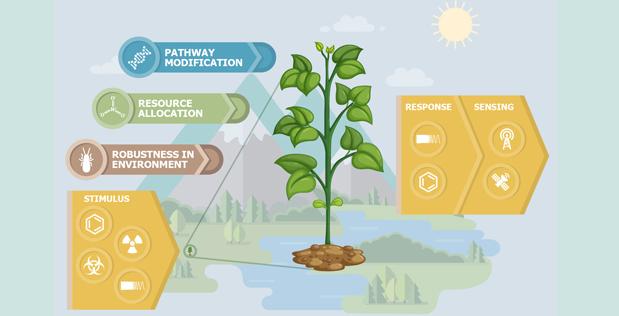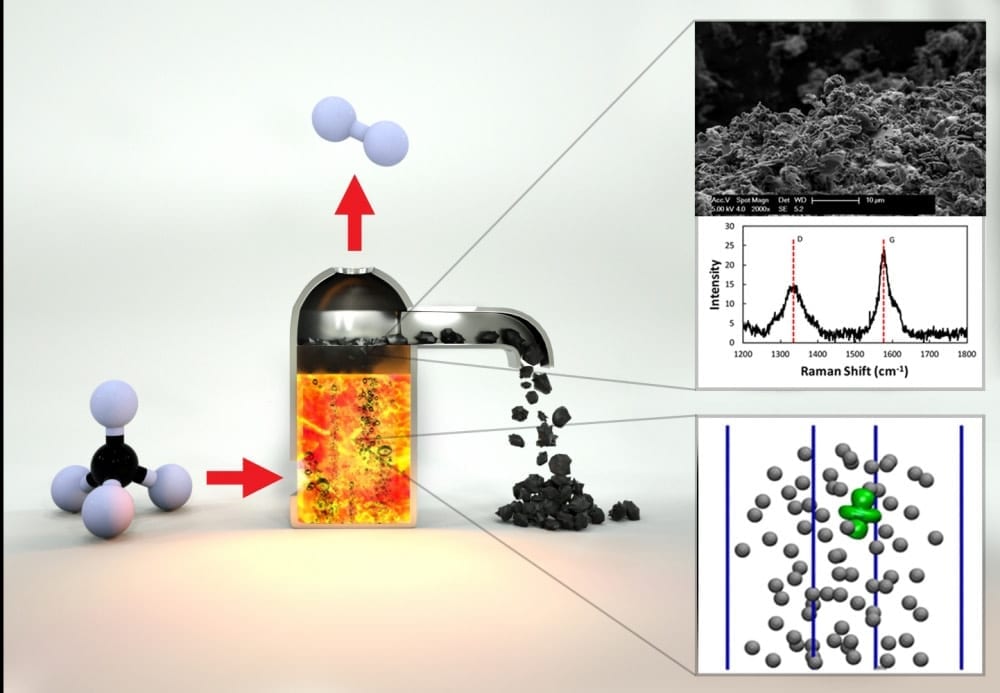
New program envisions plants as discreet, self-sustaining sensors capable of reporting via remotely monitored, programmed responses to environmental stimuli
To meet this demand, the Department of Defense invests heavily in the development of powerful electronic and mechanical sensors, and in the manpower to maintain and operate those sensors. DARPA has been involved on the research side of the equation since the Agency’s earliest days, developing technologies such as the VELA satellites and seismographs to ensure Soviet compliance with the Nuclear Test Ban Treaty. Today, nearly sixty years later, the need for information is no less urgent, but the national security landscape has grown far more complex and the challenges of monitoring distributed activity far more complicated. The military’s traditional sensors are not always optimal for the task.
Fortunately, nature, the master of complexity, offers potential solutions. DARPA’s new Advanced Plant Technologies (APT) program looks to seemingly simple plants as the next generation of intelligence gatherers. The program will pursue technologies to engineer robust, plant-based sensors that are self-sustaining in their environment and can be remotely monitored using existing hardware.
DARPA’s vision for APT is to harness plants’ natural mechanisms for sensing and responding to environmental stimuli and extend them to detect the presence of certain chemicals, pathogens, radiation, and even electromagnetic signals. APT aims to modify the genomes of plants in order to program in these specific types of sensing and trigger discreet response mechanisms in the presence of relevant stimuli, and do so in a way that does not compromise the plants’ ability to thrive. If the program is successful, it will deliver a new sensing platform that is energy independent, robust, stealthy, and easily distributed. Such sensors could find application outside of the military too, making it possible, for instance, for communities to safely identify landmines or unexploded ordinance leftover from past conflicts or testing grounds.
“Plants are highly attuned to their environments and naturally manifest physiological responses to basic stimuli such as light and temperature, but also in some cases to touch, chemicals, pests, and pathogens,” said Blake Bextine, the DARPA Program Manager for APT. “Emerging molecular and modeling techniques may make it possible to reprogram these detection and reporting capabilities for a wide range of stimuli, which would not only open up new intelligence streams, but also reduce the personnel risks and costs associated with traditional sensors.”
APT aims to go far beyond current practice, which tends to pursue only a minimal number of modifications. DARPA’s goal is to modify multiple and complex traits to give plants new capabilities that enable them to sense and report on numerous stimuli. To succeed, however, the program must also address how modified plants allocate internal resources and compete in natural environments. Past experiments of this type have reduced the fitness of modified plants by siphoning resources needed to sustain the plants. APT will seek to improve how plants collect and distribute resources, and optimize their fitness so that modified plants thrive despite anticipated interactions with natural stressors such as microbes, animals, insects, and other plants.
“Advanced Plant Technologies is a synthetic biology program at heart, and as with DARPA’s other work in that space, our goal is to develop an efficient, iterative system for designing, building, and testing models so that we end up with a readily adaptable platform capability that can be applied to a wide range of scenarios,” said Bextine.
It will be up to the researchers proposing to APT to determine which plants, stimuli, and modifications to pursue as proofs of concept.
Initial work on the program will take place in contained laboratory and greenhouse facilities, as well as simulated natural environments, and adhere to all applicable federal regulations with additional oversight from institutional biosafety committees. If the research is successful, later-phase field trials would take place under the auspices of the U.S. Department of Agriculture’s Animal and Plant Health Inspection Service following all standard protocols for plant biosafety.
APT will rely on existing ground-, air-, and space-based technology to remotely monitor plant reporting. Such systems are already capable of measuring plants’ temperature, chemical composition, reflectance, and body plan, among other qualities, from a standoff distance. The APT program will not fund development of new hardware for this purpose.
DARPA will hold a Proposers Day for APT on December 12, 2017, in Arlington, Virginia. The registration deadline is December 6, 2017. A detailed Special Notice is available at: https://go.usa.gov/xnB4M. Registration is available at: https://events.sa-meetings.com/APTProposersDay.
Full program details will be made available in a forthcoming Broad Agency Announcement.
Learn more: Nature’s Silent Sentinels Could Help Detect Security Threats
The Latest on: Self-sustaining sensors
[google_news title=”” keyword=”self-sustaining sensors” num_posts=”10″ blurb_length=”0″ show_thumb=”left”]- Despite Elon Musk's criticisms, Tesla might use lidar sensors after allon May 8, 2024 at 8:43 am
Tesla is buying lidar sensors, according to Luminar Technologies Inc., a development that marks a 180-degree turnaround from Elon Musk's earlier deriding of the laser-based sensors.
- Optimistic about sustainable peat restoration, BRGM involves all stakeholderson May 8, 2024 at 12:14 am
“We chose this field visit location because Jambi province has been a pioneer in peat restoration activities, especially in Pandan Sejahtera village, which is remarkably self-sufficient and ... fires ...
- Smart Sensors Market Size, Industry Growth at a CAGR 17.1% [2029]on May 7, 2024 at 9:30 pm
Chicago, May 08, 2024 (GLOBE NEWSWIRE) -- The smart sensors market Size was valued at USD 61.9 billion in 2024 and is projected to reach USD 136.3 billion by 2029; it is expected to grow at a CAGR of ...
- Luminar says Tesla is biggest customer for its lidar sensorson May 7, 2024 at 5:14 pm
Luminar Technologies, a maker of lidar sensors for self-driving cars, said on Tuesday that Tesla was the largest customer for its sensors in the first quarter, accounting for ...
- Self-Driving Trucks Claim Climate Benefitson May 5, 2024 at 4:00 am
The autonomous trucking industry says its self-driving vehicles can cut carbon emissions by reducing fuel use, though some groups have raised safety questions ...
- Sensors Bolster Army Prowesson May 2, 2024 at 5:00 pm
Bair explains that other delivery methods also are being pursued, including a cannon-launch capability that could fire the sensors to areas where they self-deploy. “The Army earlier demonstrated the ...
- From Self-Driving Cars to Electric Vehicles: The Latest in Automotive Innovationon April 29, 2024 at 4:53 am
Buckle up, because the automotive industry is revving up with groundbreaking innovation! From self-driving cars to electric vehicles, the future of transportation is here. Join us as we take a closer ...
- Self-driving tractor-trailers heading for U.S. roadson April 29, 2024 at 4:49 am
The self-driving semi, outfitted with 25 laser, radar and camera sensors, is owned by Pittsburgh-based Aurora Innovation Inc. Late this year, Aurora plans to start hauling freight on Interstate 45 ...
- The Future of Driving: Exploring the Latest Advancements in Automotive Technologyon April 29, 2024 at 2:35 am
Buckle up and get ready to take a thrilling ride into the future of driving! In this blog post, we will dive deep into the latest advancements in automotive technology that are revolutionizing the way ...
- Unlocking sustainable success: SAS harnesses the power of IoT sensors for a better futureon April 19, 2024 at 10:08 am
This has accelerated the need for IoT sensors. To reduce the carbon footprint, minimize rising costs, slash energy usage and propel time to value, SAS Institute Inc. offers a Microsoft Azure ...
via Google News and Bing News










